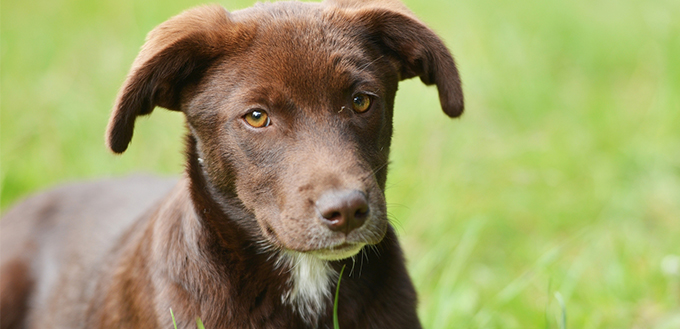One of the most popular misconceptions the world has about dogs is that they are color-blind, being able to distinguish only varying shades of gray from near white to total blackness. Many have this belief for the simple fact that dogs can see very well in the dark, a whole lot better than humans do. If not, how else will they be able to bark at something in the dark if their vision is not designed for black and white, right? In this article we’ll try to dispel these myths and shed light on the ability of pooches and mutts to see colors as well as a brief understanding of how they see in the dark.

The Anatomy and Physiology of the Canine Eye
The canine eye is pretty much the same in structure and function with that of the human eye. It can thus, be said that we have essentially the same sense of vision. However, there are unique differences that we are going to explore later on. For now, let us first start with the normal structure and function of the canine eye.
The eyes of dogs typically have the same structure as ours. It has the following important structures:
- Cornea – This is one of the most important parts of the eye since it acts as the window upon which light is transmitted and focused into the deeper structures of the organ. Without it, light will not be able to entire, hence, there won’t be any sense of vision at all.
- Iris – Think of the iris as the blind or shade of your window. You can regulate the brightness or darkness of the light that is transmitted into the inner structures of the eye.
- Pupil – The pupil is sometimes considered a part of the iris and it is this structure that actually determines just how much light enters the eye. If the iris is the window blind, then the pupil is the opening or space in between individual panel of blind. The amount of light that enters is dependent on how big this opening is.
- Lens – You’re pretty familiar with what the lens does. This is what focuses the light that enters into the retina.
- Retina – This is a very sensitive eye structure. It is located at the back and is filled with a lot of nerves that sense light rays, convert these into electrical energy, and transmit the same to the optic nerve for processing in the brain.
Dogs’ sense of sight is pretty much a very straightforward process. Light enters the cornea, passes through the iris and the pupil, transmitted into the lens, and focused into the retina. These light rays are then processed and sent to the brain via the optic nerve.
Can you see now where this is going? Since color perception depends on how the cells in the retina processes the light rays for conversion into electrical impulses, the main difference in the color perception between man and dog lies in the cells present in the retina.

Major Differences between the Human Eye and Dog’s Eye
From our previous discussion, you now understand that the sense of sight is pretty much the same for man and dog from the moment light enters the eye until the time it hits the retina. And here is where the magic begins.
There are two types of photoreceptor cells found in the eye. These are:
- Rods – These are specialized receptors that differentiate lightness and darkness. In other words, these receptor cells allow for the more efficient processing of low-light vision, such that even in the dark, these will still allow the organism to see the light.
- Cones – These specialized cells are more concerned about bright light as well as colors. These cells allow the organism to process variations in the color spectrum.
Here are the main differences between human vision and a canine vision.
- Dogs mostly have rods and very few cones.
- Dogs do not have fovea centralis that are filled with 100% cones.
Because dogs have fewer color photoreceptors – cones – they can still see colors but at significantly lesser quality. They don’t see the full spectrum of colors. For example, if we take the rainbow colors, they won’t see the full 7 colors. Instead, what they will see is dark and light blue, dark and light yellow, gray, and grayish-black. Their retinas will process orange, green, and yellow as something quite yellowish while the colors blue and violet will be interpreted as bluish. Also, bluish-green colors are often seen as gray.
The absence of the fovea centralis, a central spot located in the retina at the back of the eye where light is focused by the lens, also plays a part in their insufficient color perception. So while our furry friends can definitely see colors, it is a bit limited primarily because of the fewer number of cones.
Related Post: Best Dog Sunglasses and Goggles
Sources:
1.Sarah-Elizabeth Byosiere, What do dogs (Canis familiaris) see? A review of vision in dogs and implications for cognition research, Springer Nature Switzerland AG







